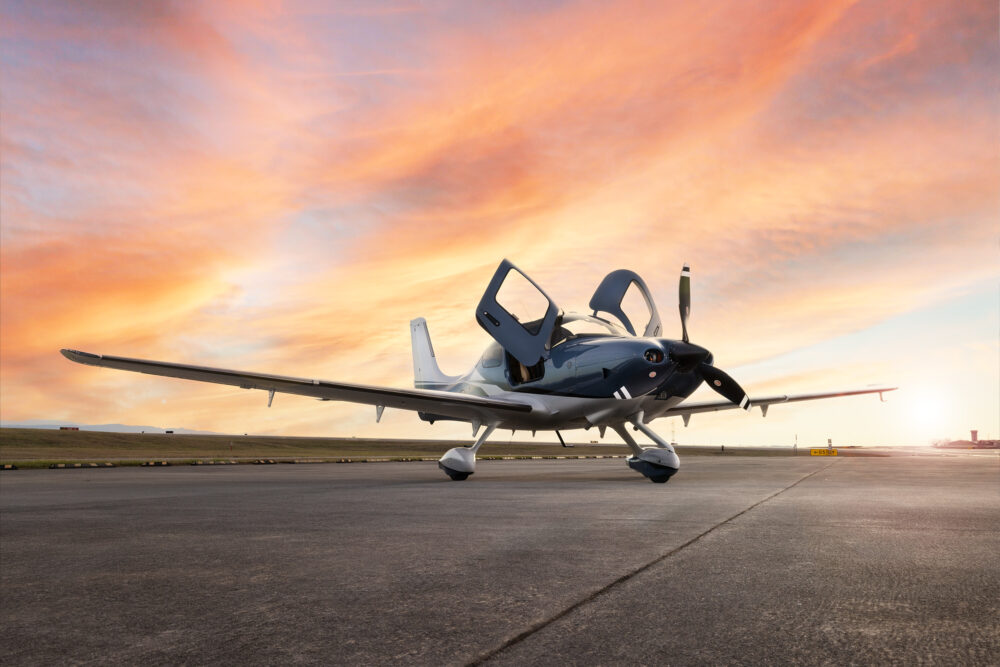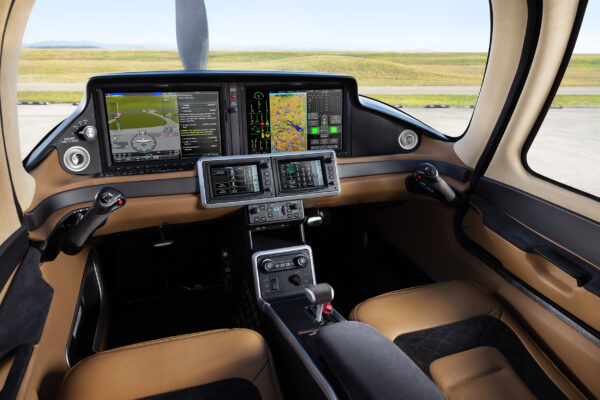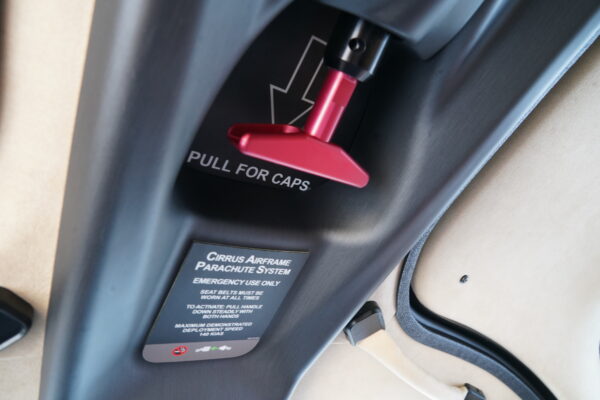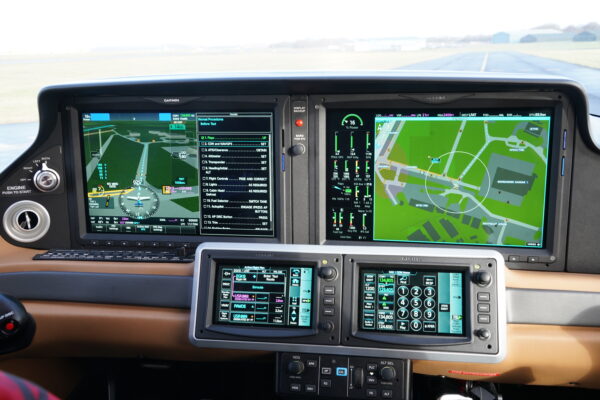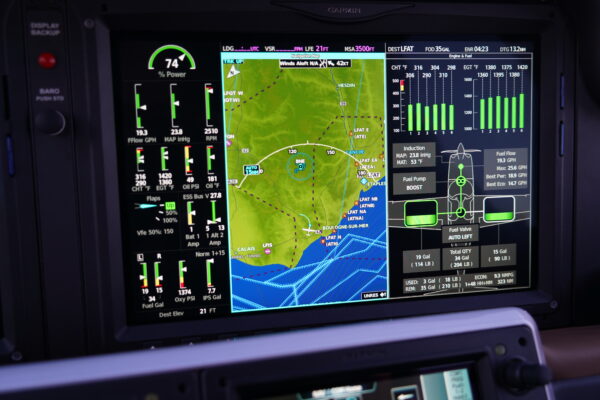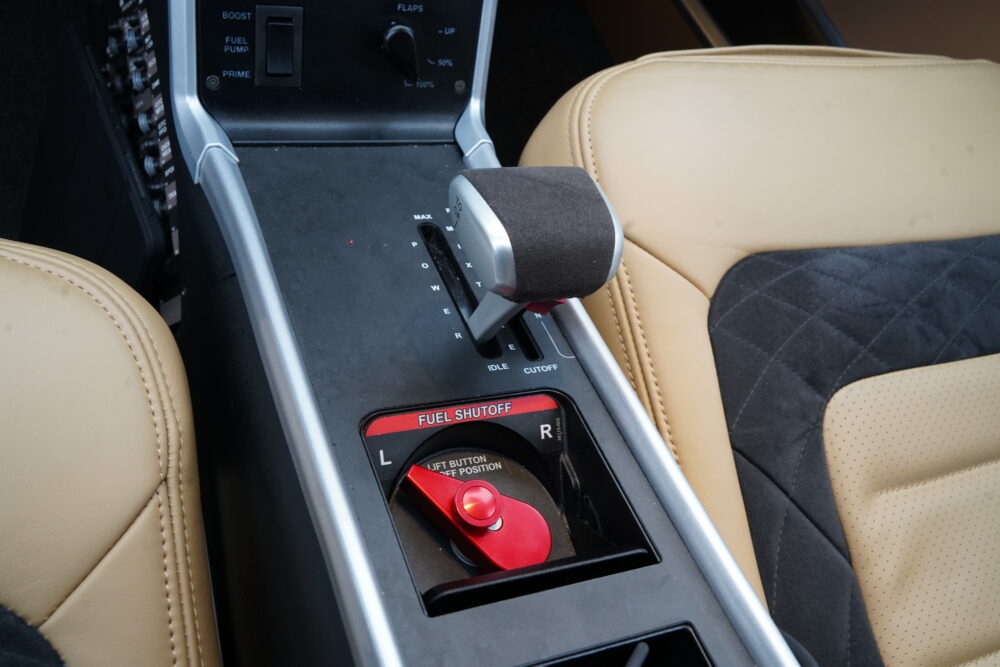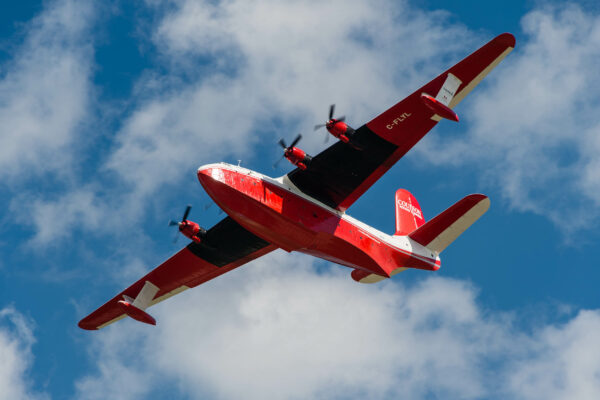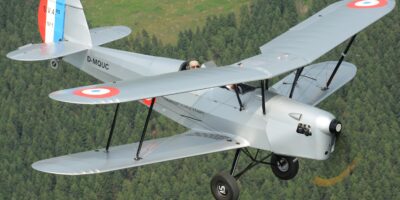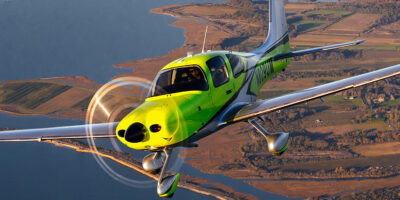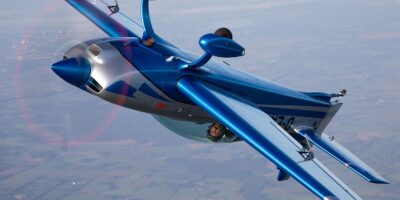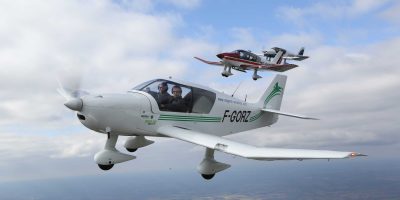The screens are large, sharp and bright and mostly controlled via the two touchscreen controllers.
This is more intuitive than the previous avionics, particularly if you have experience with Garmin’s GTN series, but make no mistake if you want to get the best from the avionics and the aeroplane, time invested in training and practice will reward you generously. Skip that step and there’s a good chance that the aeroplane will arrive before you do, and nobody wants that.
Ivy loaded the route, including the taxi clearance and we made our way to the runway. Had we opened both of the doors and cut the engine, I’m pretty sure we would have got to Vne before arriving at the holding point. It was a bit breezy.
This was my leg, and as you will have guessed thanks to 310hp and Isha, it didn’t take long to get into the air, and not much longer to start to get thrown around in turbulence.
Things were busy for a minute. It had been a while since I’d flown a Cirrus, a while since I’d used the same avionics in the SF50, and a long, long time since I’d ‘enjoyed’ similar turbulence. Despite all of that, and the relatively rapid frequency changes, the touchscreen controllers gave no issues whatsoever.
I’m used to using the GTN750 in turbulence, and found that resting my fingers on the bezel while dialling up various frequencies, codes and changes of waypoints was genuinely trouble free.
At altitude it was still turbulent, but the high-wing loading helped a lot, and before long we were watching the waves break off Boulogne and talking to Le Touquet where we’d be their only aeroplane customer of the day.
Things got a bit sporting as we descended into the circuit, the wind was 20kt something or other straight across and I was very happy to let Ivy have the landing. I’d have been happy to have a go, but who wants to run the risk of brisling the only example of a new $1m aeroplane in Europe, never mind the fact that it had a diary full of sales demos once we’d had our more adventurous than initially planned adventure?
Studying aviation weather
Like all good pilots we then spent hours at the airport studying European weather, freezing levels and possible destinations that fitted with our need to be back at Hamburg the following day to catch various commercial flights.
Our desire to explore, our sense of adventure and our need to discover almost regardless of the conditions lead us to conclude that a local flight for Thomas and a night in Le Touquet was the right answer.
I jumped in the back, Thomas fired up and we left a blustery Le Touquet for a mooch around the tumble dryer that was the north of France. We dodged heavy showers, we changed levels looking for smoother air and we patrolled the coastline.
Apart from a French Customs helicopter nobody else was out and about, and when we’d had enough we called Le Touquet only to be told that its runway was out of crosswind limits. I’ve never heard that before, and as another wall of water was making its way to the airfield we decided that some more patrolling was in order while we wondered how easy it would be to get a taxi back to Le Touquet.



